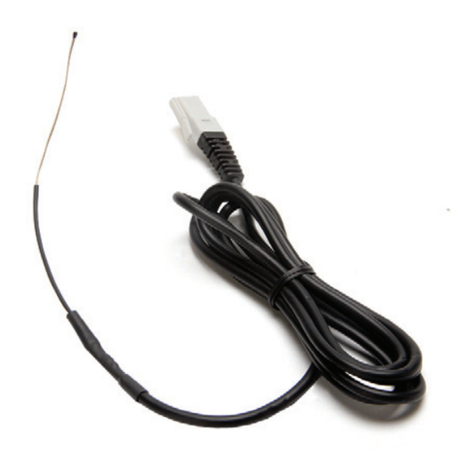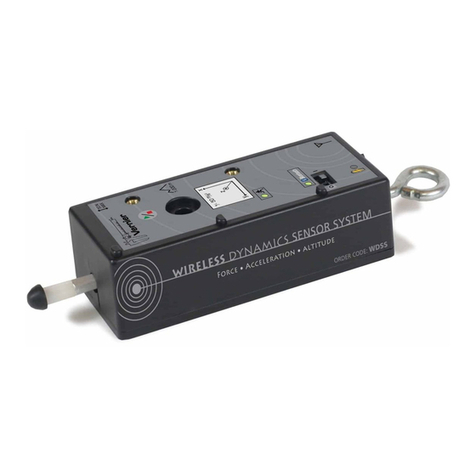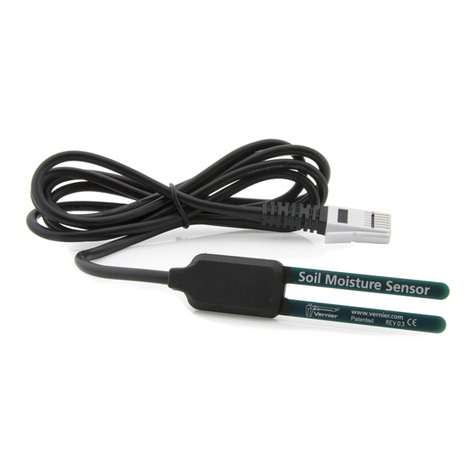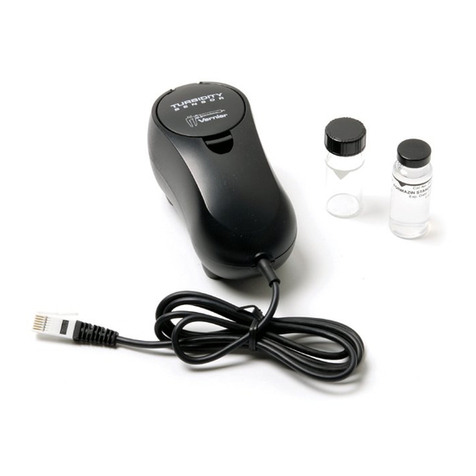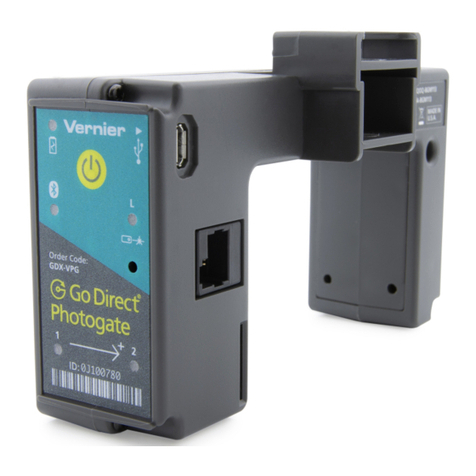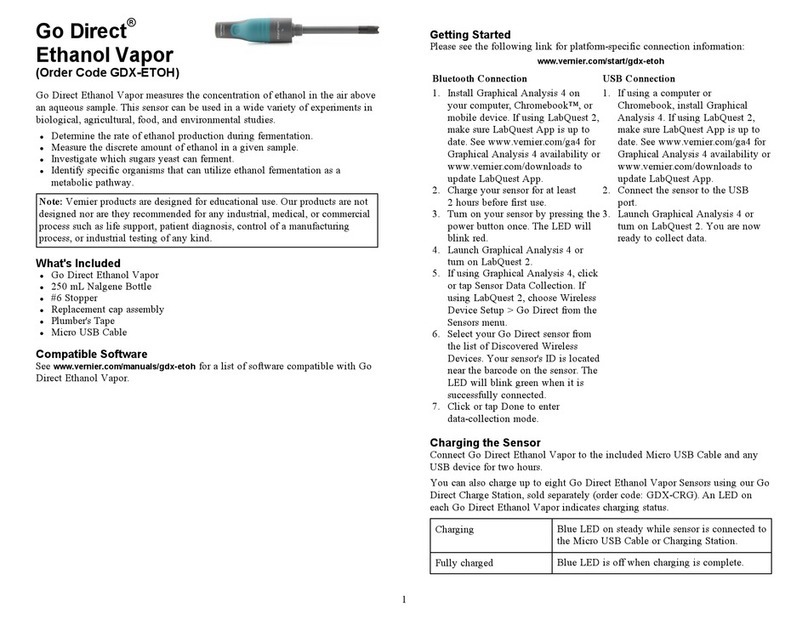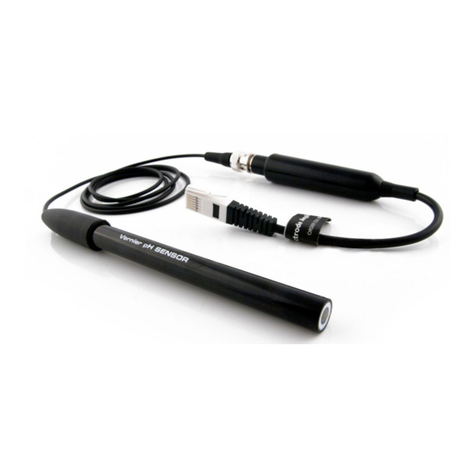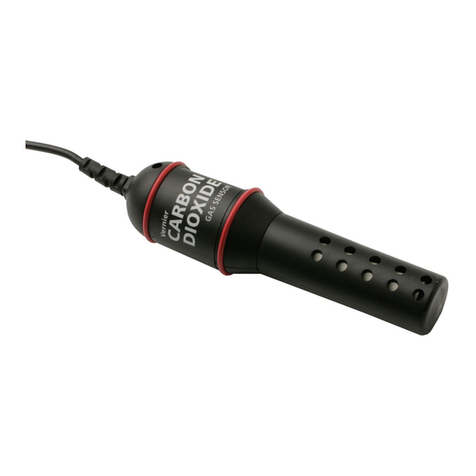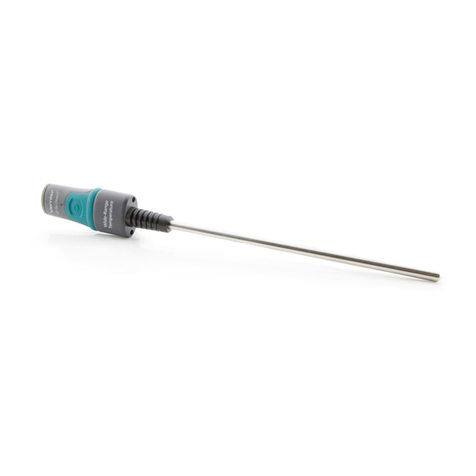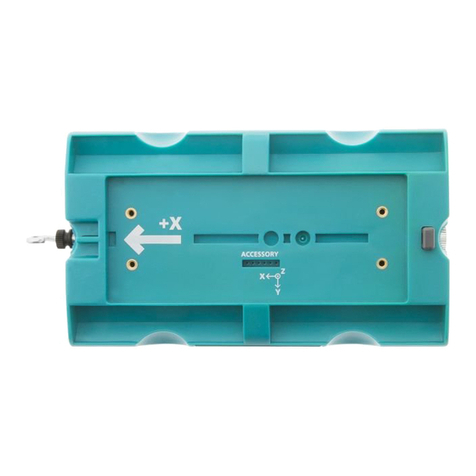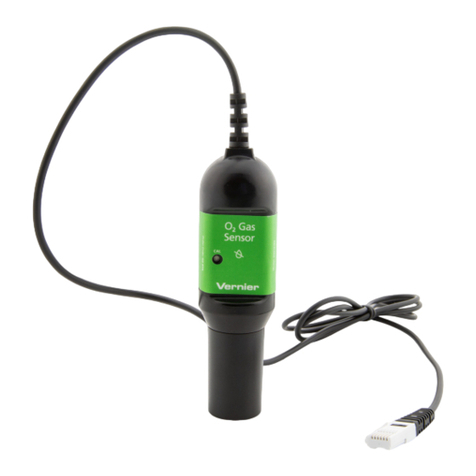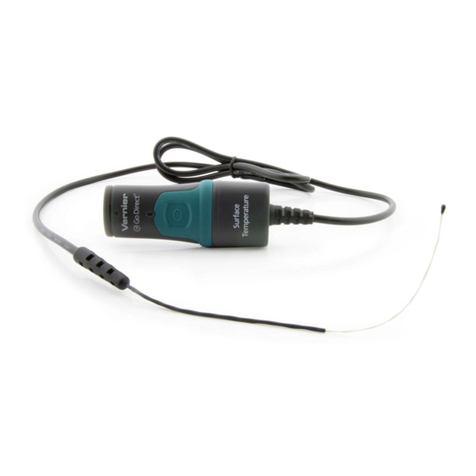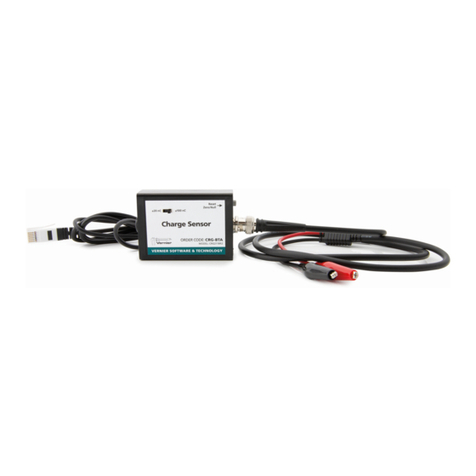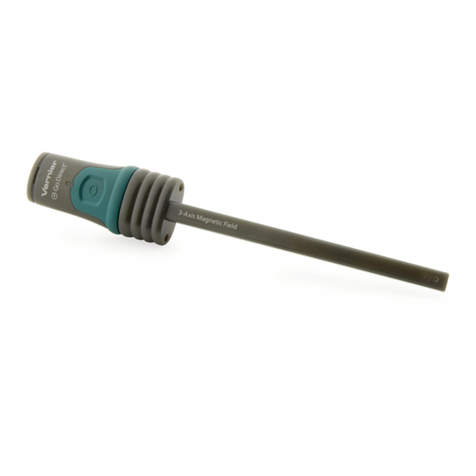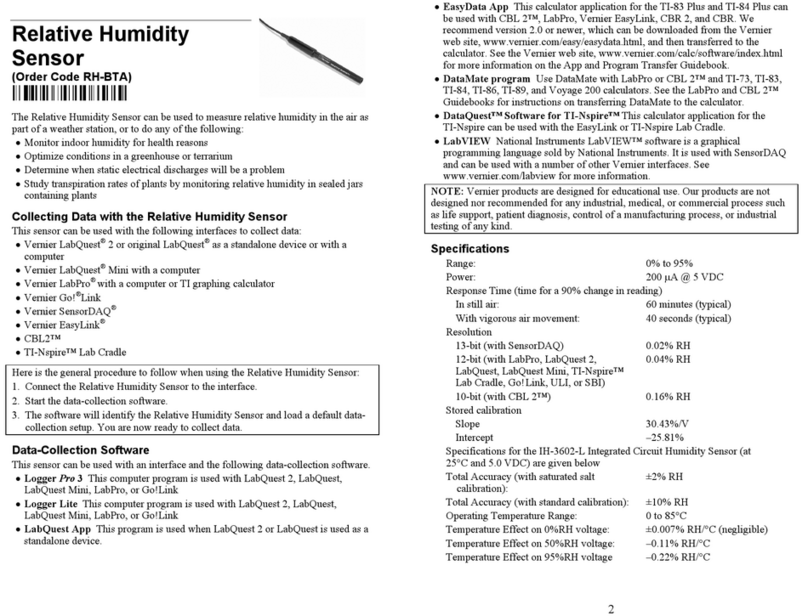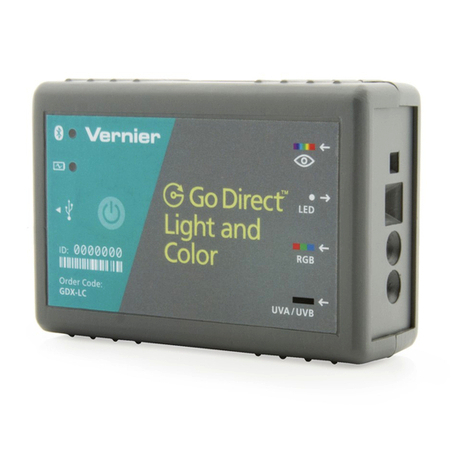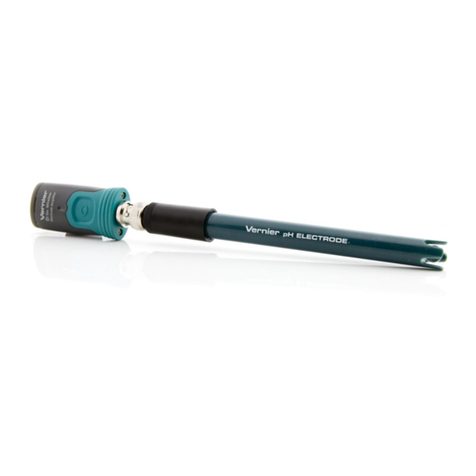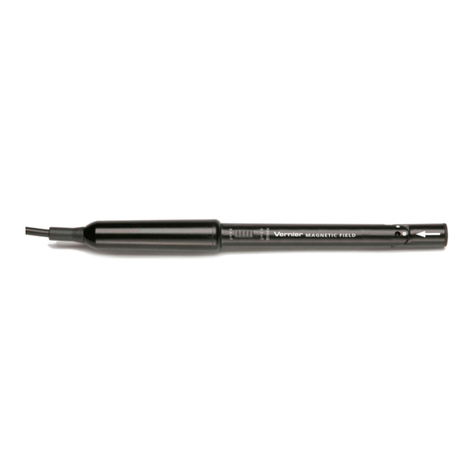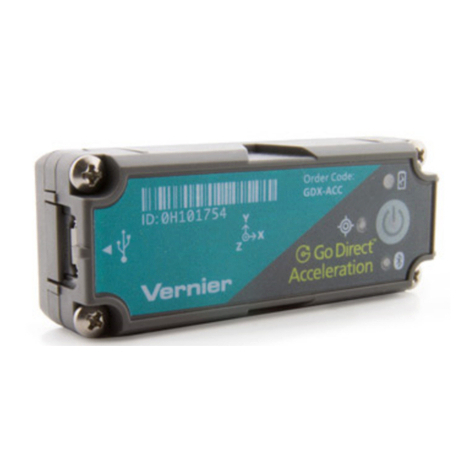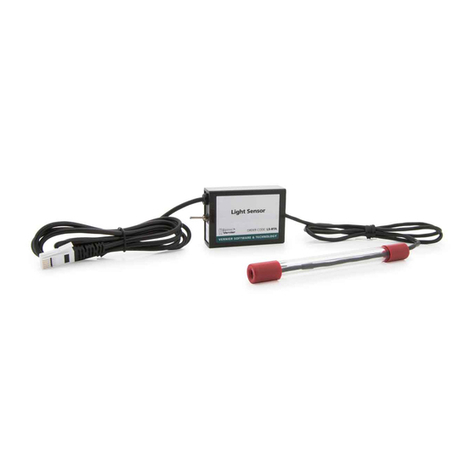
will stop flashing to show that the unit is in sleep mode. Over several months, the
battery will discharge but will not be damaged. After such storage, charge the
device for a few hours, and the unit will be ready to go.
Exposing the battery to temperatures over 35°C (95°F) will reduce its lifespan. If
possible, store the device in an area that is not exposed to temperature extremes.
Water Resistance
The Go Direct ORP Sensor is not water resistant and should never be immersedin
water.
If water gets into the device, immediately power the unit down (press and hold the
power button for more than three seconds). Disconnect the sensor and charging
cable, and remove the battery. Allow the device to dry thoroughly before
attempting to use the device again. Do not attempt to dry using an external heat
source.
How the Sensor Works
The electrode has two components: a measuring half cell comprised of platinum
metal immersed in the solution in which the redox reaction is taking place, and a
reference half cell (sealed gel-filled Ag/AgCl) to which the platinum half cell is
referenced.
The Go Direct ORP Sensor can measure redox potential in the range of –1000 to
+1000 mV. Readings toward the positive region of this range indicate a strong
oxidizing agent, while readings toward the negative region indicate a strong
reducing agent.
Troubleshooting
Examine the glass bulb. If it is broken, ORP readings will be incorrect.
Occasionally, mold will grow in the pH 4 buffer/storage solution. Mold will not
harm the electrode and can easily be removed using a mild detergent solution.
Mold growth in the storage solution can be inhibited by adding a buffer
preservative.
Residue on the tip of an ORP electrode can cause the readings to be noisy. To
clean the electrode, use a soft cloth to wipe a small amount of ethyl alcohol or
isopropyl alcohol around the globe-shaped tip of the probe. Rinse the tip with
distilled water, and repeat the alcohol cleaning one more time.
For additional troubleshooting and FAQs, see www.vernier.com/til/3967
Repair Information
If you have watched the related product video(s), followed the troubleshooting
steps, and are still having trouble with your Go Direct ORP Sensor, contact
Vernier Technical Support at support@vernier.com or call 888-837-6437. Support
specialists will work with you to determine if the unit needs to be sent in for
repair. At that time, a Return Merchandise Authorization (RMA) number willbe
issued and instructions will be communicated on how to return the unit for repair.
5
Accessories/Replacements
Item Order Code
Electrode Storage Solution, 500 mL PH-SS
Storage Solution Bottles, pkg of 5 BTL
Go Direct ORP Electrode GDX-ORP-BNC
Go Direct Electrode Amplifier GDX-EA
Micro USB Cable CB-USB-MICRO
Go Direct™ 300 mAh Replacement Battery GDX-BAT-300
USB-C to Micro USB Cable CB-USB-C-MICRO
Warranty
Vernier warrants this product to be free from defects in materials and workmanship
for a period of five years from the date of shipment to the customer. This warranty
does not cover damage to the product caused by abuse or improper use. This
warranty covers educational institutions only.
Disposal
When disposing of this electronic product, do not treat it as household waste. Its
disposal is subject to regulations that vary by country and region. This item
should be given to an applicable collection point for the recycling of electrical
and electronic equipment. By ensuring that this product is disposed of correctly,
you help prevent potential negative consequences on human health or on the
environment. The recycling of materials will help to conserve natural resources.
For more detailed information about recycling this product, contact your local city
office or your disposal service.
Battery recycling information is available at www.call2recycle.org
Do not puncture or expose the battery to excessive heat or flame.
The symbol, shown here, indicates that this product must not be disposed of in
a standard waste container.
Federal Communication Commission Interference Statement
This equipment has been tested and found to comply with the limits for a Class B digital device, pursuant to Part 15 of the FCC rules. These
limits are designed to provide reasonable protection against harmful interference in a residential installation. This equipment generates, uses
and can radiate radio frequency energy and, if not installed and used in accordance with the instructions, may cause harmful interference to
radio communications. However, there is no guarantee that interference will not occur in a particular installation. If this equipment does cause
harmful interference to radio or television reception, which can be determined by turning the equipment off and on, the user is encouraged to
try to correct the interference by one or more of the following measures:
Reorient or relocate the receiving antenna.
Increase the separation between the equipment and receiver.
Connect the equipment into an outlet on a circuit different from that to which the receiver is connected.
Consult the dealer or an experienced radio/TV technician for help.
FCC Caution
This device complies with Part 15 of the FCC Rules. Operation is subject to the following two conditions:
(1) this device may not cause harmful interference and
(2) this device must accept any interference received, including interference that may cause undesired operation
RF Exposure Warning
The equipment complies with RF exposure limits set forth for an uncontrolled environment. The antenna(s) used for this transmitter must not be
co-located or operating in conjunction with any other antenna or transmitter. You are cautioned that changes or modifications not expressly
approved by the party responsible for compliance could void your authority to operate the equipment.
6
